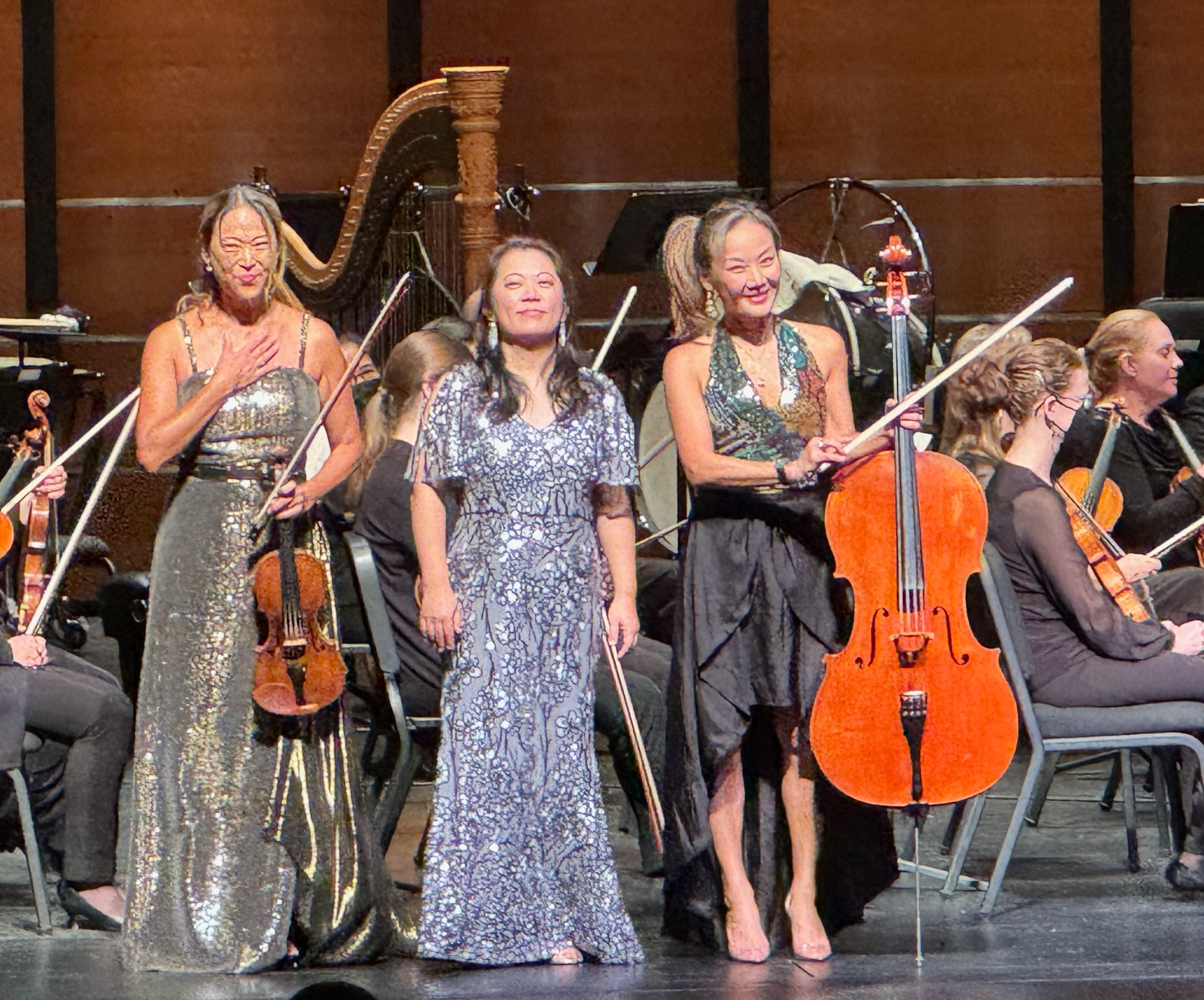Three sisters brought an unusual Beethoven Concerto alive at the most recent outing of our great Austin Symphony Orchestra.
The Ahn trio play the violin, cello and piano, which is exactly what is needed to perform the Concerto in C Major, Op. 56, composed in 1803. One aspect that makes this concerto unusual is that it very specifically a work for three soloists, not a concerto for trio and orchestra. As the programme notes indicate, “Neither the piano or violin parts offer unusual difficulties, Beethoven, with Olympian disregard, gave little consideration to the technical limitations of the cello, making it one of the most difficult parts in the repertoire.”
I mention this as one might never realise the challenge by the apparently effortless performance by cellist Maria Ahn. Both her and her sisters Angela (violin) and Azusa (piano) delivered a sterling rendition of the Concerto. That was not made any easier by the fact it lacks the “emotional intensity or the momentum of Beethoven’s other concertos,” again to quote from the programme.
In its opening movement, the orchestra lay a newly woven carpet upon which the soloists can frolic. The violin and cello duel before the piano joins the dance. Apparently exhausted, the three solo instruments fall silent, allowing the orchestra to take charge. Seemingly recovered, the three solo instruments develop an intricate, fast-paced exchange. Beethoven might have gone too far here, as whatever plot he had in mind seems overwhelmed by the superfluity of notes. A somewhat sparer version might have made this concerto more of a fan favourite. The best that can be said it for, according to the critics, is ‘polite entertainment.’
Far superior was the Symphony No. 7 in D minor by Antonin Dvorak. This important work was commissioned by the Royal Philharmonic Society in 1884. Dvorak himself wrote to a friend that he wanted this work “to make a stir in the world.” He was not disappointed as the London audience at the premiere broke protocol by applauding after every movement.
Even though it has been described as somber, I found it quite refreshing overall. The opening contains quizzical undertones, while the brooding orchestra traverses a sylvan forest with birds singing (the flute supplies the sounds of nature). A cheerier mood opens the second movement, with elements of sweeping grandeur. The lilting melody that opens the third movement that is, in my opinion, ahead of its time in evoking a sense of synesthesia. I found the music evocative of the aroma of a fine tea blended with Ceylon cinnamon and coriander. The fragrant notes wafted through the air as the orchestra revelled in a panoply of notes. It was in 1902 that a ‘perfume concert’ was held at Carnegie Hall. While that one featured real smells wafting on the wing of music, this third movement of the Dvorak symphony evoked the same type of sense experience for me.
The horns herald a strident and forceful opening in the final movement, full of vim and vigour. This transitions to a stately mode where first the winds and then the horns have free play to amp up the mystery that seems to pervade this movement. The conclusion was a spine-tingling moment that the audience will not forget.
Visit the website for upcoming concerts:
www.austinsymphony.org
Photo by C Cunningham
